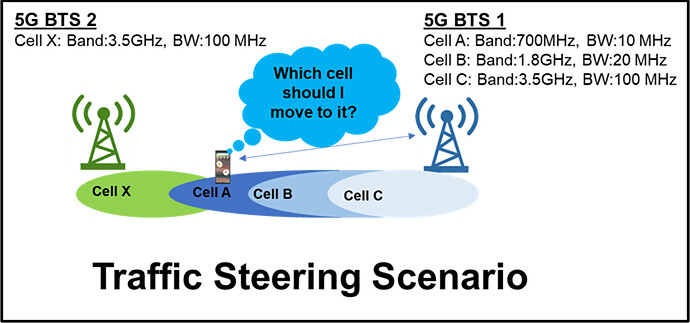-
My friend: Hi Ibrahim, I have a question for you.
- Me: Please, go ahead.
-
My friend: I was wondering how traffic steering is implemented in open RAN?
- Me: Traffic steering in open RAN simply means to manage user traffic across different access technologies, so for example if we have in one network different technologies such as LTE, 5G NSA, 5G SA, WiFi, NR-U, etc., so traffic steering is trying to allocate the UEs at he best cell that can serve them and also at the same time to keep the cells’ load balanced to assure that spectrum is very well utilized. This can be done by different techniques such as intra-freq HO, inter-freq HO, Secondary cell activation, Secondary cell group addition, etc.
-
My friend: But these techniques can be used as well in legacy RAN solutions?
- Me: Yes, that’s true. However, the problem of legacy RAN solutions is that it treats all UEs in the same way and UEs will be moved from one cell to another depending on the UE measurement reports mainly and cell’s load in some specific situations. But open RAN in addition to the RF measurement and cells’ load will also consider other factors such as UE mobility profile (e.g., stationary, horizontal, vertical speed), UE service type (e.g., delay sensitivity or bit error rate sensitive), traffic pattern (e.g., average UL/DL packet size, periodicity), etc. And then considering all these factors with some AI/ML techniques will allow for better decisions to move each UE separately and here each UE may be treated differently than other UEs unlike legacy RAN solutions.
-
My friend: But how can this be realized in open RAN?
- Me: The Non-RT RIC defines and updates the policies to guide the behavior of the traffic steering xApp that is configured in the near-RT RIC. It also performs the statistical analysis of the data and provides policies and enrichment information over the A1 interface towards near-RT RIC. The policy can be for example to take an action like allow or forbid cell A for user X for a particular service, slice, or QoS profile. The implementation of the policy is done within the near-RT RIC, which takes the specific decision (e.g., that a specific user needs to move from cell A to cell B) and sends that over the E2 interface to a specific E2 node. Then this E2 node executes those actions by means of RRC procedures (e.g., Handover command, Secondary Node addition, etc.)
-
My friend: Thank you so much. You made it very clear.
- Me: You are most welcome.
LinkedIn: Ibrahim Sayed, PMP on LinkedIn: #5g #5gnr #5gtechnology #openran #oran | 27 comments
